By Tim Richards
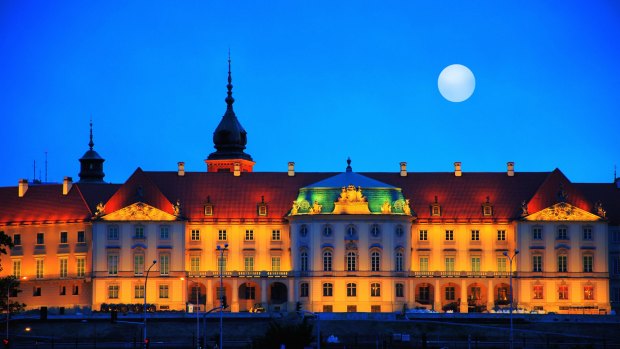
Find out why travellers are heading to Warsaw's dark side.Credit: 4eye
When I lived in Poland in the mid-1990s, I was entranced by the blocky neon signs on the nation's buildings.
In the larger cities, enormous neon letters spelt out the station names of 19th-century railway buildings, in a fascinating contrast of styles. Often in disrepair, these illuminated survivors from the communist era were nonetheless strangely beautiful statements of civic pride.
Luckily, I wasn't the only one to admire these colourful fragments of the past. In 2004, British visitor David Hill was also struck by their curious appeal.
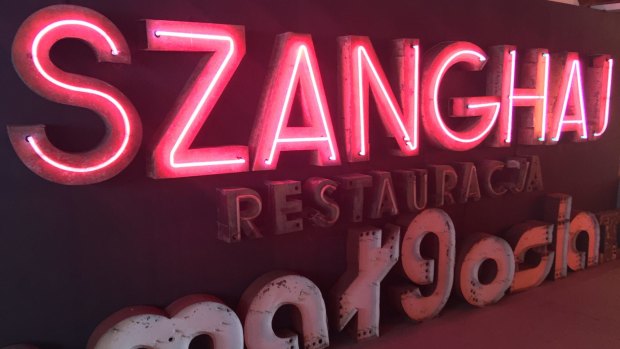
On a restaurant sign - Szanghaj is spelt out in capital letters almost a metre high.Credit: Tim Richards
"We were walking through the Warsaw streets, just sightseeing, and I noticed these fantastically beautiful, monolithic signs," says Hill. "To me, as a typographer and designer, they seemed really fresh and original, even though they were rusting, falling off, and the glass wasn't working."
Hill's partner Ilona Karwinska, a photographer of Polish heritage, was looking for a new project. They decided to document the neon signs.
"We wanted to start with the sign from a shop called Berlin, which had sold textiles manufactured in East Germany. But it had been removed and was going to be destroyed, so we contacted the owners and they agreed to give it to us."
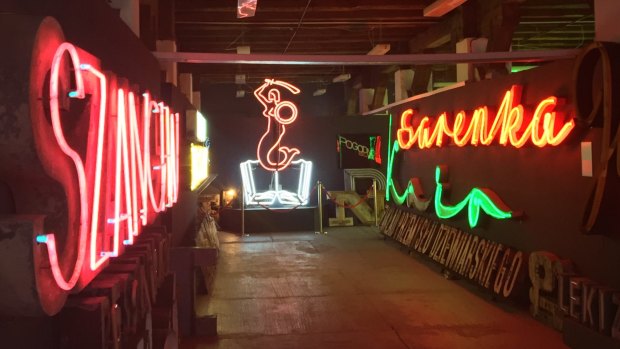
The Syrenka sign from the public library.Credit: Tim Richards
One thing led to another, and the success of the photographic book Warsaw Polish Neon led to the duo collecting more big neon relics. The end result was the Neon Museum, one of the Polish capital's quirkiest attractions.
To reach it, I take a tram from the city's commercial heart east across the broad Vistula River to Praga. Not to be confused with the Czech capital Prague, Praga has long been the poor cousin of Warsaw neighbourhoods, littered with crumbling industrial buildings.
In recent years the area has developed hipster pockets of artists' studios and cool bars. One of the most impressive is Soho Factory, an art and design hub with restaurants and cafes thrown into the mix.
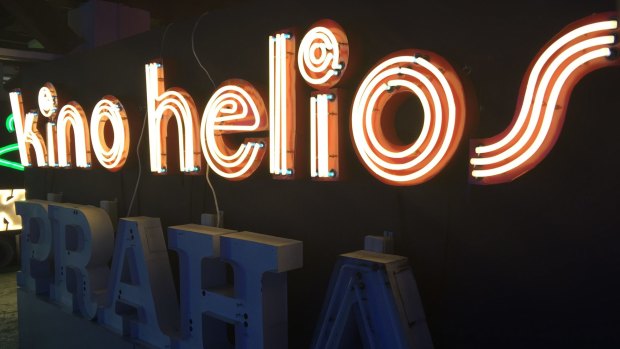
Praha sign at the Neon Museum.Credit: Tim Richards
Having been in Central Europe for weeks, I'm heartily sick of bad filtered coffee, so I first follow my nose to the cafe of coffee roaster Kofi, where they serve a Melbourne-class espresso.
Then it's off to the Neon Museum, housed in an factory building with a timber interior, one of the oldest in Poland. Huge scattered letters are propped along its outside walls, and the interior is hung with enormous signs.
The first I spot is the Berlin sign, then there's a cavalcade of neon signs from all sorts of businesses: grocery stores, cafes, bars, restaurants, banks.
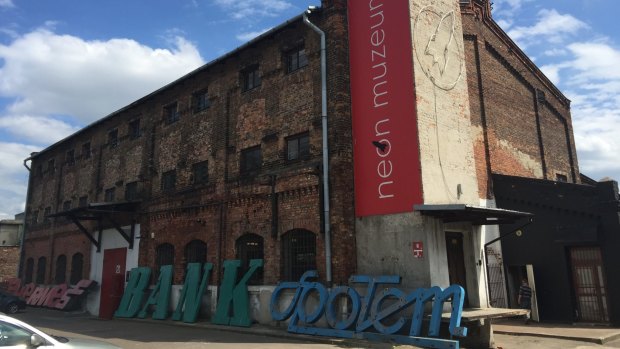
The Neon Museum. Huge scattered letters are propped along its outside walls, and the interior is hung with enormous signsCredit: Tim Richards
Many are restored and lit, but scattered at floor level are others – often in pieces – that are faded and rusty. Somehow they're no less attractive than the working signs above them, an evocative reminder of the faded grandeur of the neon art.
Standing this close, I'm struck by how large the signs are. One, spelling out the name of a communist-era Chinese restaurant, Szanghaj, is spelt out in capital letters almost a metre high.
Hill reminds me of the scale of many buildings constructed in postwar Warsaw.
"The authorities were looking for ways in which to bring back some Western glamour, but strongly hold onto socialism – and neon was chosen as that medium," he says. "The buildings were big, therefore the neon signs had to be too."
The signs on display here are clearly works of art, carefully designed with distinctive typefaces and curves.
At the end of one row is a neon Syrenka, the mermaid with a shield and sword who's the emblem of the city. Attached to a representation of an open book, she once drew attention to a public library. On another wall, glowing white letters announce kwiaty (flowers), surrounded by colourful neon blooms.
Other signs from hotels, cafes and cinemas hint at the social dimension of life under communism, with even an unexpected jauntiness – as depicted by a neon cat in boots, advertising shoes.
At the far end of the museum is signage donated by the Polish railway company PKP. Luckily, not all is being discarded; when a new station building opens soon in the city of Łódź, it'll retain the neon sign from its predecessor.
As I leave, I ask Hill why he thinks visitors to Warsaw make the trek across the river to the museum.
"People of all ages appreciate retro stuff, but there's something unique about neon," responds Hill. "I think its appeal is universal, like a pair of denim jeans. It twinkles, it gives you a good feeling. Everybody wants to see the light of neon."
THE FACTS
FLY
Emirates (emirates.com) connects Melbourne to Warsaw, from $2000 return.
STAY
Novotel Warszawa Centrum, ul Marszalkowska 94/98, novotel.com
Oki Doki Hostel, Plac Dąbrowskiego 3, okidoki.pl
EAT & DRINK
Kofi, ul Mińska 25, kofibrand.pl
Warszawa Wschodnia, ul Mińska 25, gessler.sohofactory.pl
SEE
Neon Museum, ul Mińska 25, neonmuzeum.org. Open Wednesday to Sunday from noon to 5pm, entry fee $3.50.
Sign up for the Traveller Deals newsletter
Get exclusive travel deals delivered straight to your inbox. Sign up now.